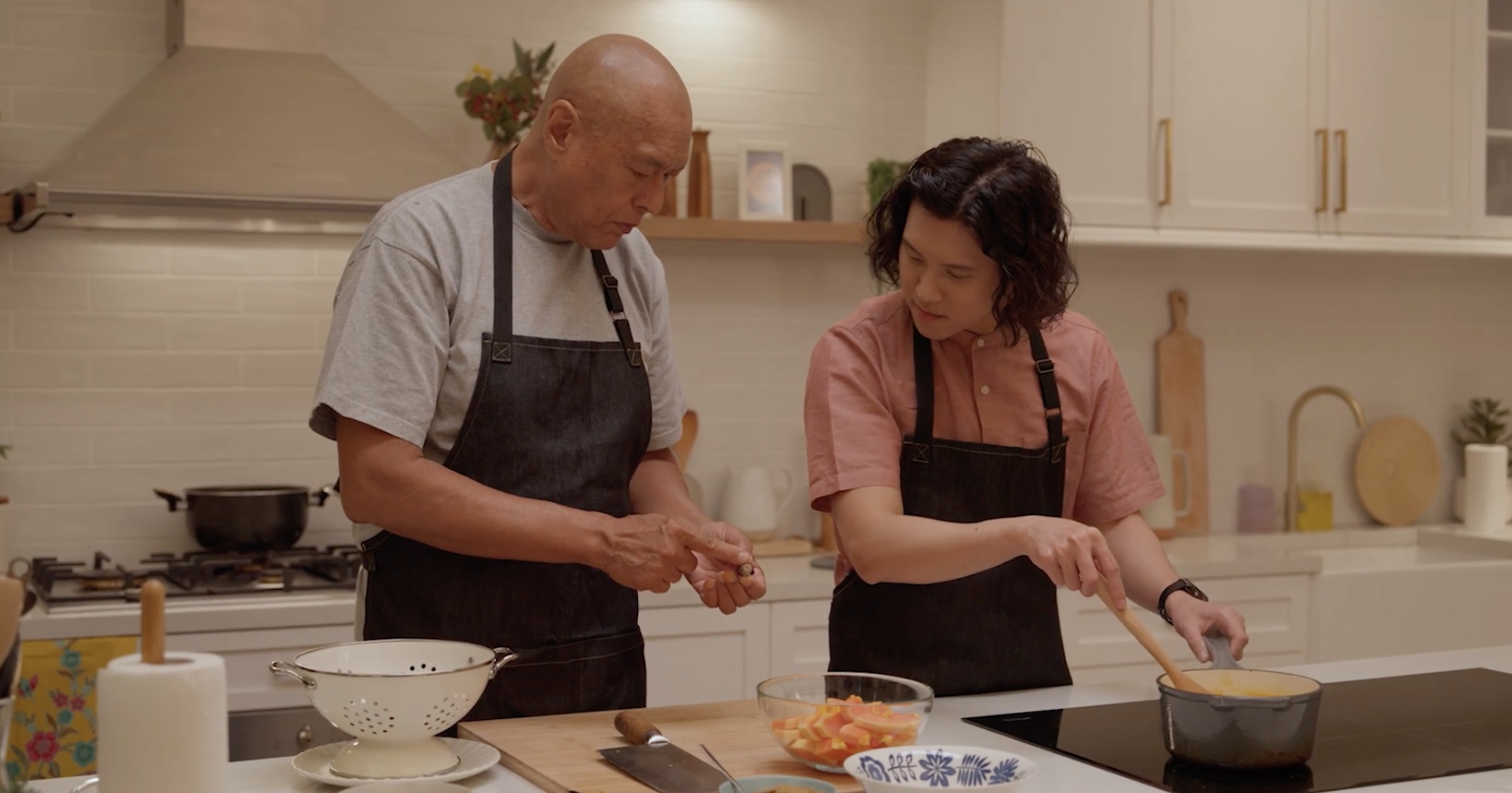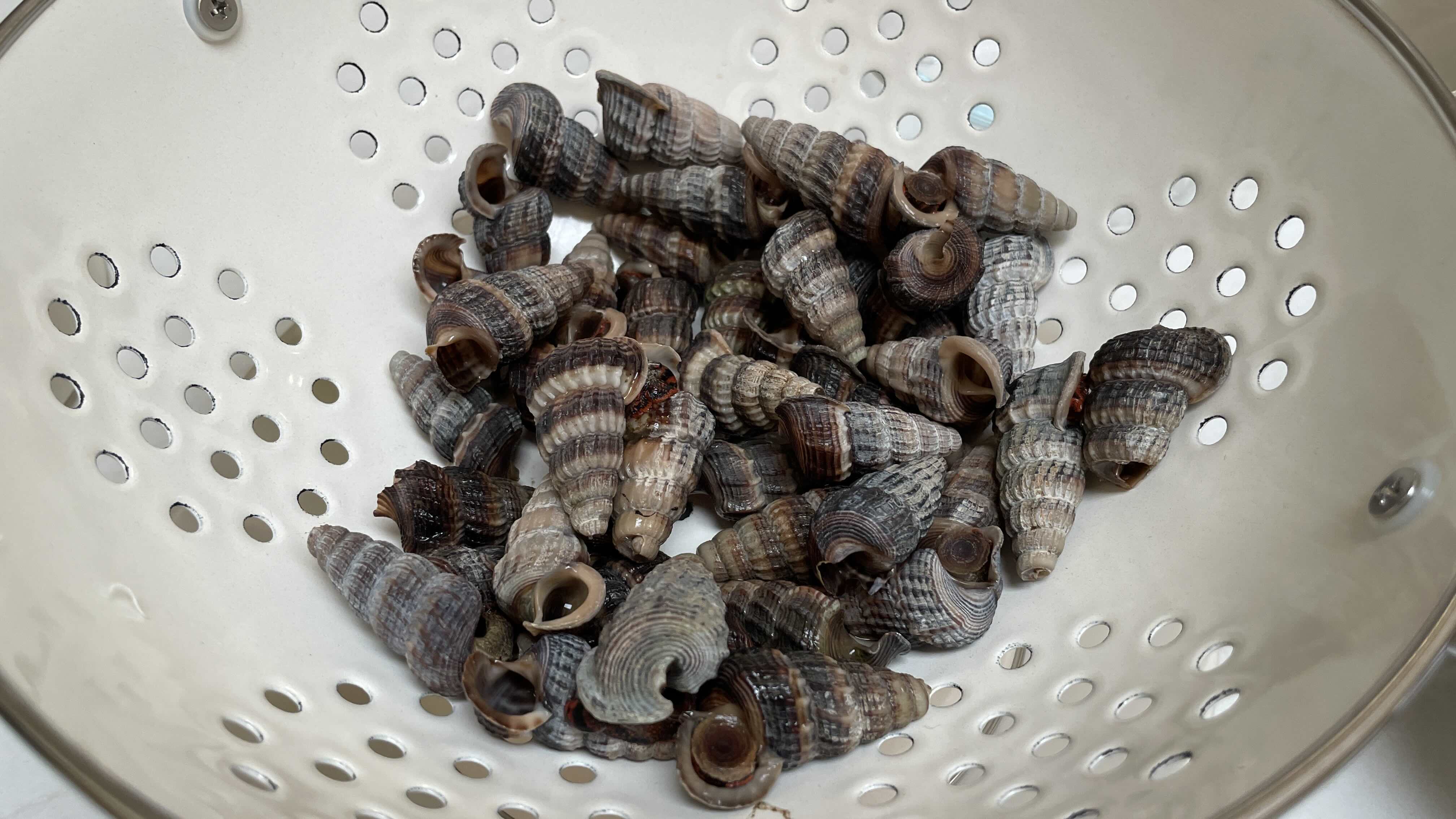Sea Snail & Papaya Curry: A Eurasian Specialty
MasterChef Singapore judge Damian D’Silva tells us what it’s like foraging for food on the beach as a young boy, while making an uncommon Kristang dish that combines two very unlikely ingredients: sea snail and papaya.
Episode summary
For MasterChef Singapore judge Damian D’Silva, sea snail and papaya curry – known in the Kristang language as cari papair cung siput chupaku – is a dish that brings back fond memories of foraging at the beach and cooking with his grandfather.
Damian explains how seafood has been a traditional protein for the Kristang people as he whips up his favourite childhood dish, while Paddy the host tries his best to ensure the snails don’t make a break for it.



Recipes
Damian learnt to make this dish while watching and helping his grandfather in the kitchen. Coconut milk is used in both Malay and Eurasian sea snail curry dishes, but the Eurasian version also includes semi-ripe papaya. According to Damian, this is the star ingredient that gives the curry its characteristic taste and sweetness. Since sea snails are seasonal, they can be easily substituted with other seafood such as prawns.
Damian’s ingredients and instructions
For the rempah (spice paste):
50 g dried prawns
30 g fresh red chillies
15 g dried chillies
400 g peeled shallots
20 g toasted shrimp paste
40 g soaked candlenuts
30 g toasted coriander powder
5 cm lemongrass (from root)
10 g skinned galangal
15 g peeled garlic
6 g skinned fresh turmeric
Other ingredients:
1/2 a half-ripe papaya
1 kg sea snails
grated coconut
cooking oil
water
1. Soak the dried prawns in warm water and drain.
2. Soak the dried chillies and drain.
3. Blend into a fine paste the prawns, chillies, shallots, shrimp paste, candlenuts, coriander powder, lemongrass, galangal, garlic and turmeric.
4. Skin the papaya. Discard the seeds and cut across into slices.
5. Wash the sea snails thoroughly in cold water. Discard broken shells. Use a chopper or a pair of pliers to cut off the pointed end.
6. Soak the grated coconut in 800 ml warm water and extract the first part. Add another 800 ml warm water to extract the second part.
7. In a pot on low to medium heat, add some cooking oil to the spice blend and cook until most of the liquid has evaporated.
8. Bring up the heat and add the second part (thin extract) of the coconut milk and bring to a boil, stirring continuously.
9. Lower the heat, add the sea snails and simmer till done, about 15 minutes.
10. Add some water, then the papaya slices, and cook until soft but still a little firm.
11. Add the first part (thick extract) of the coconut milk. Stir continuously until the liquid starts to simmer.
12. Add salt and sugar to taste. The gravy should not be too thick or watery.
Related Podcast
Seaside Foraging and Eurasian Cuisine
MasterChef Singapore judge Damian D’Silva grew up by the sea and spent many happy hours foraging for horseshoe crabs, shellfish and sea snails that would end up in the cooking pot. In this episode, he talks about how his childhood and grandfather influenced his cooking philosophy, when he found his calling in the kitchen (later than you’d expect), and what’s left for him after winning the prestigious culinary award La Liste.
Related Article
Eurasian Community
The Eurasian community is a small but influential ethnic group that has been present in Singapore since the early 19th century. Eurasians are persons with mixed European and Asian lineage. Most Eurasians in Singapore can trace the European part of their ancestry to the Portuguese, Dutch or British, while others are of Danish, French, German, Italian or Spanish descent. The Asian component of their ancestry is usually derived from the Chinese, Malays or Indians.
Portugal’s Linguistic Legacy in Southeast Asia
Papia Kristang in Melaka is the only surviving Portuguese-based creole in Southeast Asia. In Singapore, Kristang has been supplanted by English, Malay, Tamil and Chinese, although there have been efforts to keep the language and culture alive.
Meeting with the Sea
Melissa De Silva mulls over what it is to be Eurasian in this evocative short story that takes her back to the Portuguese Settlement in Melaka.
Related Books
Daus, Ronald. Portuguese Eurasian Communities in Southeast Asia. Singapore: Institute of Southeast Asian Studies, 1989. (From National Library, Singapore, call no. RCLOS 305.869059 DAU-[GH])
Gomes, Mary. The Eurasian Cookbook. Singapore: Horizon Books, 2001. (From National Library, Singapore, call no. RSING q641.5 GOM)
Marbeck, Joan Margaret. Kristang Phrasebook: A Revival and Understanding of the Malaysian-Portuguese Creole. Lisbon: Calouste Gulbenkian Foundation, 2004. (From National Library, Singapore, call no. R 469.7995 KRI)
Noronha, Theresa. The Eurasian Table: Inspiration, Recipes and History. Singapore: [publisher not identified], 2015. (From National Library, Singapore, call no. 641.595957)
Pereira, Quentin. Eurasian Heritage Cooking. Singapore; London: Marshall Cavendish Cuisine, 2012. (From National Library, Singapore, call no. 641.595957 PER)

